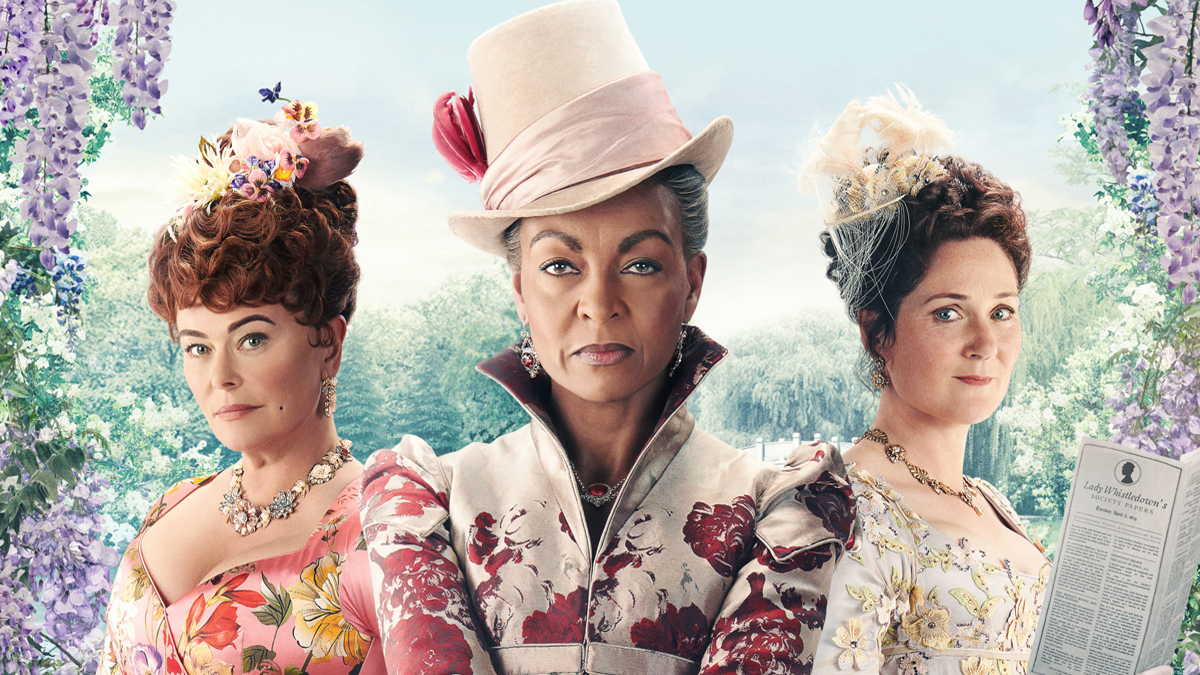I recently wrote up an article with a series of relevant Regency era facts to help fans of Netflix’s period drama Bridgerton better understand the Regency. I got some lovely social media feedback from not just people who are new to Regency romance, but also from those who are well-read in the genre. I realized there may still be some additional facts that I can share to help understand the first season of Bridgerton as well as to set up new fans with more knowledge that may come in handy for watching season two, which was recently greenlit.
WARNING: This article contains spoilers for Bridgerton season 1.
Shouldn’t Lady Featherington have been wearing black after her husband died?
Yes, she should have worn ourning Black for at least six months and Half Mourning (grey or lavender) for the next six. Her daughters should have also done so, just over a six month period. There were very specific mourning customs during the Regency, and Portia Featherington’s choice not to adhere to them was a huge slight to her late husband. Given the nature of their relationship, it’s not entirely a surprise for her to do so, although such a choice would create a good deal of gossip.
What were “leading strings”?
At several points in the season, there were references to characters being barely out of leading strings. Leading strings were strips of fabric attached to the clothing backs of young children. They were used as something to keep young children out of trouble as well as to sort of guide wobbly walkers. Most children outgrew the need to use them by age three or four. The second half of the 18th century marked the beginning of the end of their use, but most adults in the Regency would have had leading strings. Referring to someone as being “just out of their leading strings” was a way to imply that they were young, immature, and had a lack of wisdom associated with both conditions. Anthony used these words to describe Colin when he was upset about his impulsive engagement.
What was a “Special License?”
When Daphne finds herself needing to marry Simon quickly to avoid a scandal, Anthony and Simon seek out a special license. In order to marry, a couple must have one of the following:
- Posting Banns: An announcement put up on the church wall and read for the pulpit for three consecutive Sundays giving an opportunity for any objections to be issued. This had to be done on the parishes for both the bride and groom if they were separate. The couple could then get married within the next 90 days in a Church of England in the parish of the bride or groom between 8AM and 12PM.
- Common License: No banns needed reading. Did cost money, and still had the same time and place requirements for the actual ceremony as posting banns.
- Special License: No banns needing reading and the wedding could take place at any time and place of the couple’s choosing. It cost more than a common license and the Archbishop of Canterbury had to issue it. To get the Archbishop’s approval, one usually had to be titled or the child of someone with a title. Some high society people married by special license just to flaunt the fact they had the resources to get a special license.
Wait, did Violet Bridgerton actually imply she and her husband had been intimate before getting married?
Yes, yes she did. Despite all of the dire threats of young ladies being ruined, it happened. It happened quite a bit. This was part of the reason short engagements were common. It was sometimes referred to as “anticipating vows” and it was more common than commonly admitted. In fact, judging from marriage and birth records, about one-third of Regency-era brides were pregnant at the altar, and that doesn’t include the ones who were intimate without getting pregnant. The absolute lack of sex education young women often received could not have helped with this statistic at all.
What was a dowry?
Marriages involved carefully drawn up contracts called “marriage settlements” which included a number of provisions, including a dowry. A marriage settlement was basically a form of prenuptial agreement. These settlements included how a dowry would be spent, the discretionary of “pin” money a wife got, how much money a wife got upon becoming a widow, and what amount of money would go to the children the marriage produced. The dowry was paid by the wife’s family and the dowry as well as interest it earned covered a wife’s lifetime spending money, money she had available if widowed, and money she could pass onto her children upon the death or one or both parents. Any young woman who eloped would not have had a marriage settlement or dowry drawn up, which meant that anything she owned became the property of her husband with no protections. Her family could also refuse to provide funds for her future if they objected to the elopement, which made the whole undertaking very risky.
Why was Simon called both “Master Simon” and “Lord Clyvedon” as a child?
As the Duke of Hastings oldest (and only) son, Simon was allowed the use of his father’s lesser title as the Earl Clyvedon who would be addressed as Lord Clyvedon. You saw this title used when a school-age Simon was announced to his father. As a young child, the staff simply would have called him “Master Simon.”
What happened to high society women who never married?
High society young women were basically trained in only one occupation: being the wife of a high society man. There were not many options for a young woman who didn’t marry if she had not been lucky enough to inherit money of her own. Some women could become governesses, while others might act as a ladies companion who could either act as a companion to a widow or a companion/chaperone to a young lady without another female to act in such a capacity. They might manage the household of a bachelor sibling or assist a married sister or a sister-in-law with their children. Unmarried “on the shelf’ daughters were often seen as a burden on the family who would have to provide for them. Eloise was lucky because her well-connected and loving family and their resources more likely to give her that choice should she want it without treating her as a burden. Not every young woman was in such a position.


